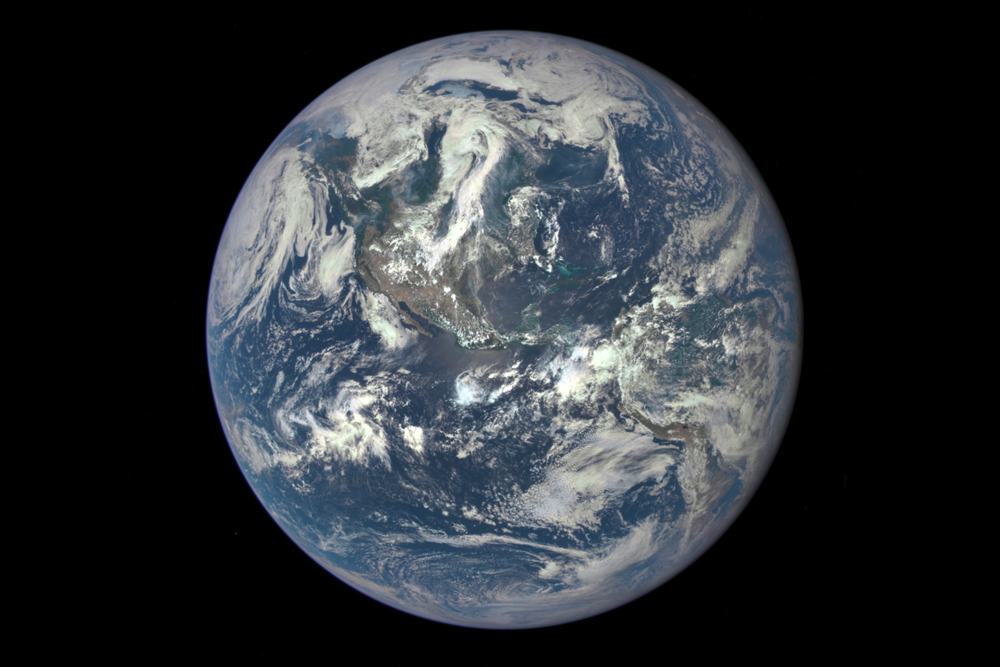Scientists Analyze Earth's Elemental Makeup to See How the Planet Was Formed

Exoplanet hunters can determine a remarkable amount of information about distant worlds by studying the planet's orbital parameters, and also by looking at the planet's host star. Now scientists from the Australian National University have turned those methods around to provide a closer look at Earth.
In doing so, the team says it has produced the best estimate of Earth's elemental composition, which has always had a fair amount of uncertainty. The team said that its study also provides more insight into how the Earth formed 4.6 billion years ago.
"Determining the chemical composition of rocky exoplanets was definitely the inspiration for this work," said Charley Lineweaver, an associate professor at the Australian National University's Planetary Science Institute, in an email to Seeker. "We know the four most abundant elements — iron, oxygen, silicon and magnesium — make up more than 90 percent of the Earth's mass, but working out exactly what the Earth is made of has been tricky."
As the team wrote in its paper, transit photometry and radial velocity measurements can yield rough estimates of the densities and mineralogies of exoplanets. But potentially more precise estimates of the chemical composition of rocky worlds can be made based on the known elemental abundances of their host stars, especially when combined with estimates of how the planets may have initially formed from their stellar nebulae.
"The idea is that rocky planets orbiting their host stars are devolatilized pieces of their host stars," Lineweaver explained. "Since the processes of devolatilization, sublimation and evaporation are dominated by the universal properties of atoms and molecules, then the effects of these processes could be similar everywhere in the universe."
RELATED: Pitch Black Exoplanet That Reflects No Light Spotted by Hubble Telescope
So if exoplanet scientists can estimate the chemical composition of unseen rocky planets by applying a devolatilization process, Earth scientists should be able to calibrate that here in our own solar system by comparing the best model of the elemental composition of the Earth with the best model of the elemental composition of the Sun.
Breaking space news, the latest updates on rocket launches, skywatching events and more!
The biggest surprise of the research was that no one had actually done this yet.
"'Surely,' we said to ourselves initially, 'Earth scientists will have produced excellent elemental compositions of bulk Earth,' Lineweaver said in his email. "We found lots of separate papers about the elemental composition of the mantle and we found more speculative papers about the elemental composition of the core. We found lots of heated disagreements between researchers, and we found a woeful neglect of error bars."
Error bars represent the uncertainty of measurements, providing a general idea of how precise or imprecise a measurement might be. Without quantifying the uncertainties, Lineweaver noted, one can’t combine numbers and know how accurate the numbers are.
This highlights another surprise the researchers found.
"To combine the elemental compositions of the mantle and the core, one crucially needs to know the mass fraction of the core," Lineweaver continued. "This number tells you how much of the core's elemental composition you have to add to the mantle's composition. The core mass fraction has been estimated but no one had gone to the trouble of estimating the uncertainty on that fraction."
RELATED: Objects Destabilized by Jupiter or Saturn May Have First Brought Water to Earth
Even though seismological studies of earthquakes provide information about Earth's core, mantle, and crust, the team said it's hard to convert this information into an elemental composition. We have also only scratched the surface, so to speak, of our planet. Lineweaver said that rocks on Earth's surface only come from as deep as the upper mantle, and we've only drilled down to 10 kilometers of our 6,400 kilometer radius planet.
Haiyang Wang, a Ph.D. student and the paper's lead author, said that the team made the most comprehensive estimates of the Earth's composition based on a "meta-analysis" of previous estimates of the mantle and core, and a new estimate of the core's mass.
"Our work focused on getting realistic uncertainties so that our reference model can be used in future comparisons of the Earth with the sun, or with Mars or with any other body in the solar system," said Wang in a statement.
They compiled previous estimates on composition with the most recent data on Earth's radial density profile to conclude that our planet's core makes up about 32.5 percent (plus or minus .3 percent) of Earth's total mass. Iron-nickel alloy accounts for about 87.90 percent of the core with a variety of other elements such as silicone, oxygen, sulfur, and carbon making up the remaining mass.
RELATED: NASA's Next Mission to Mars Will Probe the Red Planet's Deep Interior in 2018
The researchers determined that the four most abundant elements — oxygen, magnesium, silicon and iron — make up about 94.19 percent (plus or minus .69 percent) of the total mass of Earth's mantle. Their estimates for elements like magnesium, tin, bromine, and cadmium turned out to be significantly lower than previous estimates of the bulk of Earth, while abundances of sodium, potassium, and chlorine are significantly higher.
The team said that its composition methods "usefully calibrate the unresolved discrepancies between standard Earth models under various geochemical and geophysical assumptions," and that incorporating the uncertainties for the elemental abundances of Earth's primitive mantle and core provides a reference that can be used by both Earth and planetary scientists.
"This will have far-reaching importance," said co-researcher Trevor Ireland, also from ANU, "not only for planetary bodies in our solar system but also other star systems in the universe."
Originally published on Seeker.

Nancy Atkinson is a science journalist and author who works to tell the stories of people involved in space exploration and astronomy. She has written two books about the people behind NASA projects like the Apollo missions and the robotic rovers exploring our solar system, and hosted/worked on several astronomy
podcasts. A writer for Universe Today since 2004, Atkinson's work can also be found at The Planetary Society and Ad Astra, the magazine of the National Space Society. Other work can be found at Seeker, New Scientist, Wired.com, Space.com, NASA’s Astrobiology Magazine, Space Times Magazine, and several newspapers in the Midwest.
